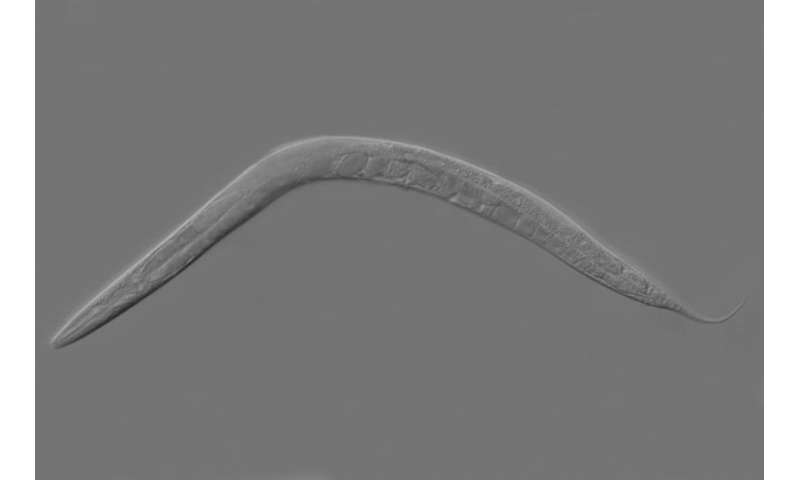
Research from the lab of Mark Alkema, Ph.D., professor of neurobiology, sheds light on how the “flight-or-flight” response impairs long-term organism health. The study, conducted in the nematode worm, C. elegans, a common research model, was published in Nature.
When humans perceive a dangerous or stressful situation, the body releases stress hormones such as adrenalin. Adrenaline makes the heart beat faster, increases blood flow to the brain and muscles, and stimulates the body to make sugar to use for fuel. The rush of adrenaline triggers the “fight-or-flight” response which gives the person the ability to escape a predator or respond to a threat.
Dr. Alkema, working with the laboratory of Professor Diego Rayes at the National University of South in Argentina, studied the impact of the repeated activation of the “fight-or-flight” response on health in the nematode C. elegans. This small worm is a popular model organism that has helped resolve many fundamental questions in biology, ranging from development to brain function and disease.
Animals are exposed to different forms of stress. These can be abrupt, such as the appearance of a predator, or more progressive, like chronic food shortage, high temperatures, or oxidation.
“Much like in humans, repeated activation of the flight response in C. elegans drastically shortened lifespan,” said Jeremy Florman, Ph.D. candidate in the Alkema lab. “The flight response is crucial for the worm to escape from predators. But we find there is a cost; the repeated activation of the flight response reduces the worm’s capacity to deal with other challenges it encounters in its environment.”
In the study, investigators found that the flight response in C. elegans triggers the activation of a single pair of neurons that release tyramine, the invertebrate analog of adrenaline. In contrast, exposure to environmental challenges such as heat and oxidative stress reduces tyramine release. This stress hormone thus provides a switch that regulates the animal’s response to either acute or long-term stressors.
Alkema and Rayes went on to show that tyramine stimulates the insulin pathway through the activation of an adrenergic-like receptor in the intestine. The activation of the insulin pathway can satisfy the animal’s energy demands of the flight response. On the other hand, the down-regulation of the insulin pathway is needed help to protect cells from environmental stress and extend lifespan.
Source: Read Full Article






